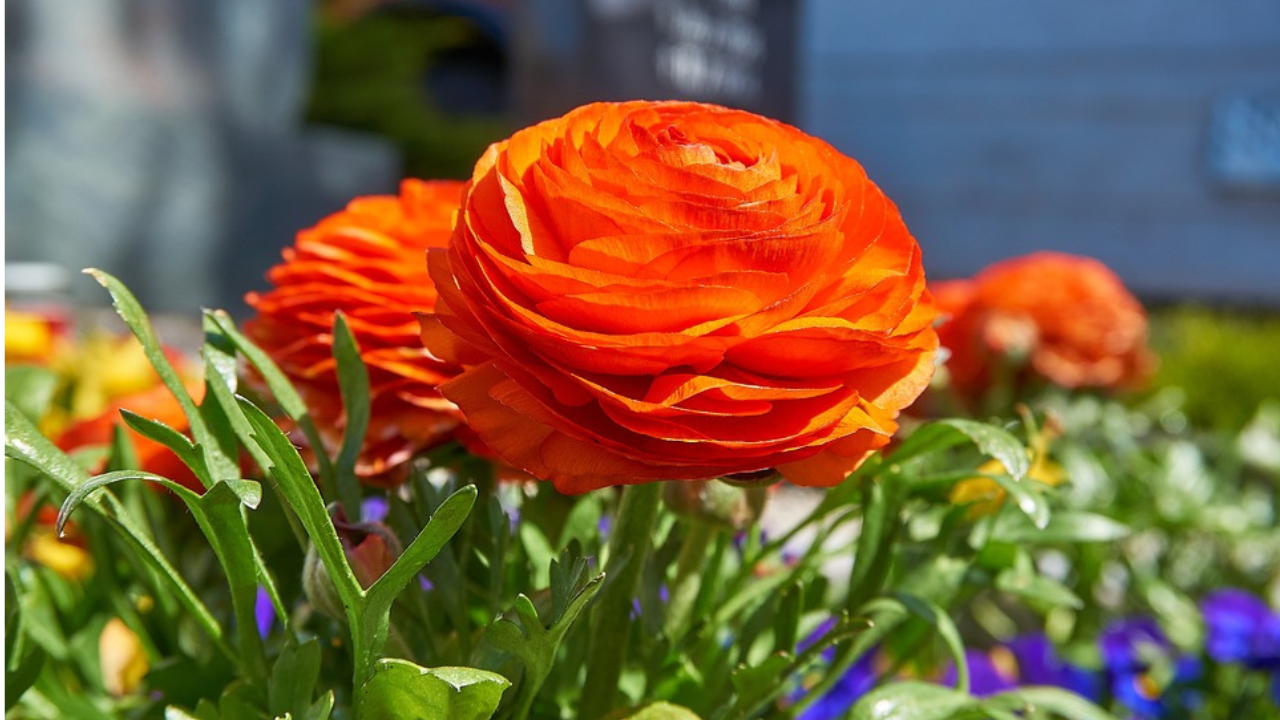Want lush ranunculus blooms? Discover how to plant bulbs correctly. Our guide covers depth, spacing, and essential aftercare.
Ranunculus bulbs are known for their vibrant and delicate blooms, adding a touch of elegance to any garden. If you're looking to plant these beauties in your garden, follow these simple steps to ensure stunning blooms that will brighten up your outdoor space.
Introduction to Ranunculus Bulbs
Ranunculus bulbs, also known as Persian buttercups, are popular spring-flowering bulbs cherished for their vibrant and layered petals resembling roses. These bulbs thrive in well-drained soil and prefer cooler temperatures, making them an excellent choice for early spring or fall planting.
Selecting Ranunculus Bulbs
When selecting ranunculus bulbs, opt for firm and healthy bulbs free from any signs of rot or damage. Choose bulbs that are plump and heavy, indicating they are packed with nutrients and ready to produce beautiful blooms.
Preparing the Planting Site
Before planting ranunculus bulbs, prepare the planting site by ensuring it receives ample sunlight and has well-drained soil. Remove any weeds or debris from the area to provide a clean environment for the bulbs to grow.
Planting Ranunculus Bulbs
Choosing the Right Time
Plant ranunculus bulbs in the fall for spring blooms or in early spring for summer blooms. Avoid planting them during the hottest months of summer to prevent heat stress on the bulbs.
Preparing the Soil
Ensure the soil is loose and well-drained to prevent waterlogging, which can cause bulb rot. Incorporate organic matter such as compost or peat moss to improve soil structure and fertility.
Planting Depth and Spacing
Plant ranunculus bulbs with the "claws" or tubers facing down at a depth of 2 to 3 inches (5 to 7.5 cm) and space them approximately 4 to 6 inches (10 to 15 cm) apart to allow for proper root development and airflow.
Caring for Ranunculus Bulbs
To ensure healthy growth and abundant blooms, provide proper care for your ranunculus bulbs throughout the growing season.
Watering Needs
Keep the soil evenly moist but not waterlogged, as overwatering can lead to bulb rot. Water the bulbs deeply once a week, adjusting the frequency based on rainfall and temperature.
Fertilizing Requirements
Apply a balanced fertilizer high in phosphorus, such as a 5-10-5 or 10-20-10 formulation, to promote strong root development and flowering. Fertilize the bulbs in early spring and again after blooming to support their growth cycle.
Protection from Pests and Diseases
Monitor the plants regularly for signs of pests such as aphids or snails, and treat them promptly with insecticidal soap or organic pesticides if necessary. Additionally, avoid overhead watering to prevent fungal diseases such as powdery mildew.
Supporting Ranunculus Growth
As ranunculus plants grow, provide support for the stems and blooms by using stakes or trellises to prevent them from bending or breaking under their weight.
Harvesting and Storing Ranunculus Bulbs
Once the blooms have faded and the foliage has turned yellow, carefully lift the bulbs from the ground and allow them to dry in a well-ventilated area for a few days. Store the bulbs in a cool, dry place until it's time to replant them in the fall.
Common Problems and Solutions
- Bulb Rot: Ensure proper drainage and avoid overwatering to prevent bulb rot.
- Pest Infestation: Monitor for pests regularly and treat them promptly with appropriate measures.
- Fungal Diseases: Avoid overhead watering and provide good air circulation to prevent fungal diseases.
Conclusion
Planting ranunculus bulbs can add a burst of color and elegance to your garden with their stunning blooms. By following these simple steps and providing proper care, you can enjoy a vibrant display of ranunculus flowers year after year.

FAQs
-
Can ranunculus bulbs be grown in containers?
- Yes, ranunculus bulbs can be grown in containers as long as they have well-drained soil and receive adequate sunlight.
-
How long do ranunculus flowers bloom?
- Ranunculus flowers typically bloom for 6 to 8 weeks, depending on growing conditions and variety.
-
Do ranunculus bulbs multiply?
- Yes, ranunculus bulbs can multiply and produce more tubers over time, resulting in larger clumps of plants.
-
Can ranunculus bulbs be planted in the shade?
- Ranunculus bulbs prefer full sun but can tolerate partial shade, although they may produce fewer blooms in shady conditions.
-
Are ranunculus bulbs toxic to pets?
- Ranunculus bulbs contain toxins that can be harmful to pets if ingested, so it's best to plant them in areas where pets cannot access them.

